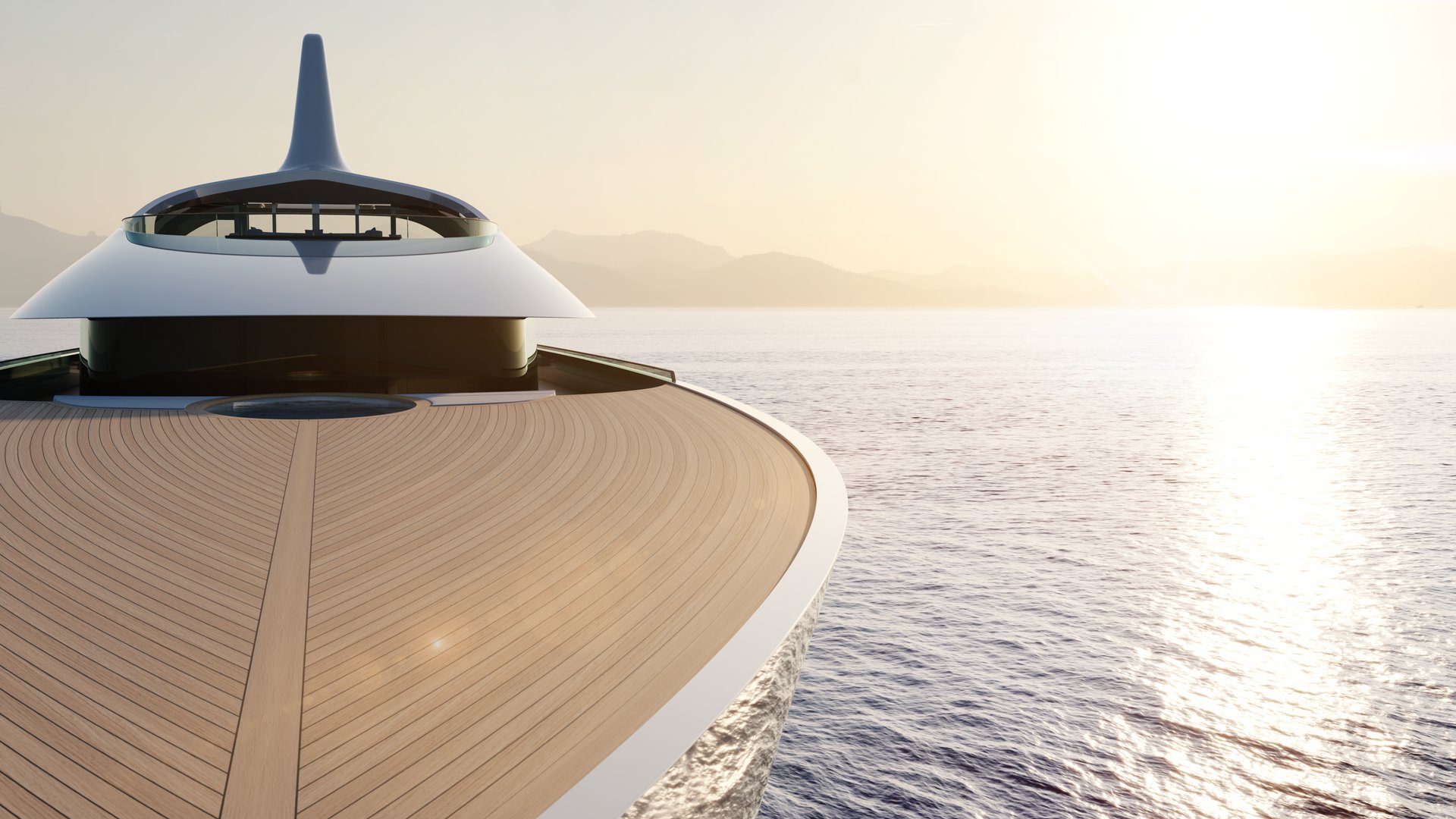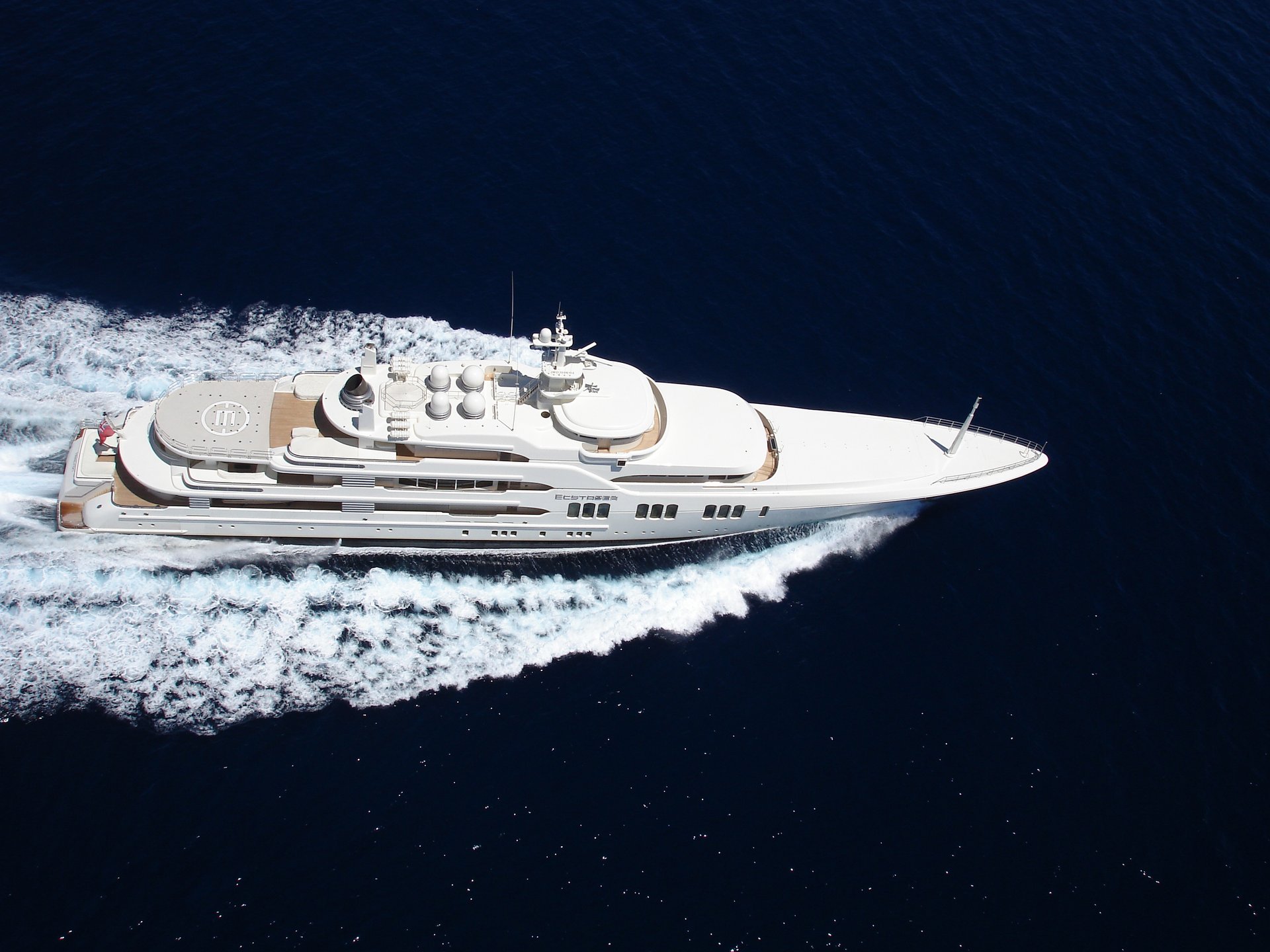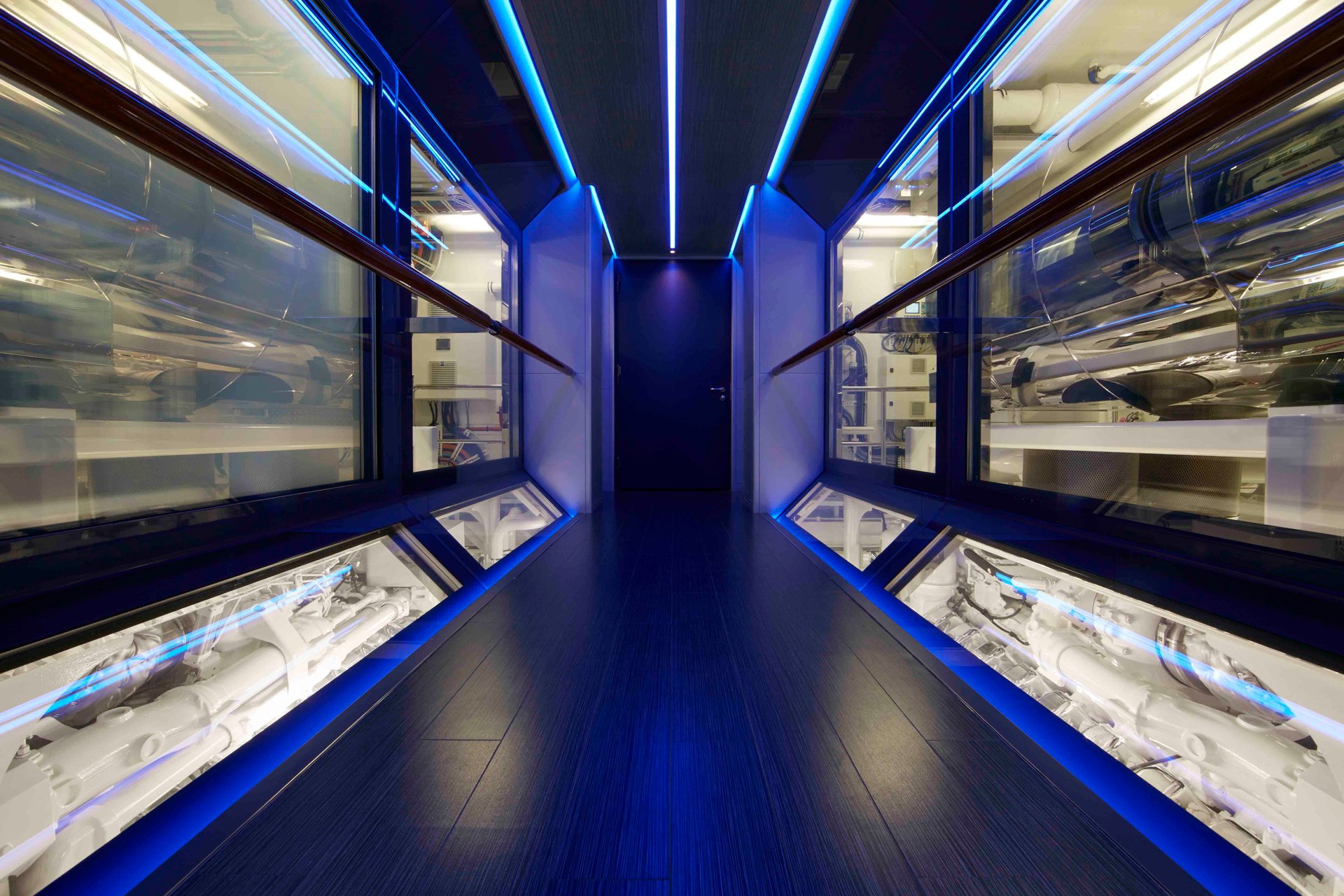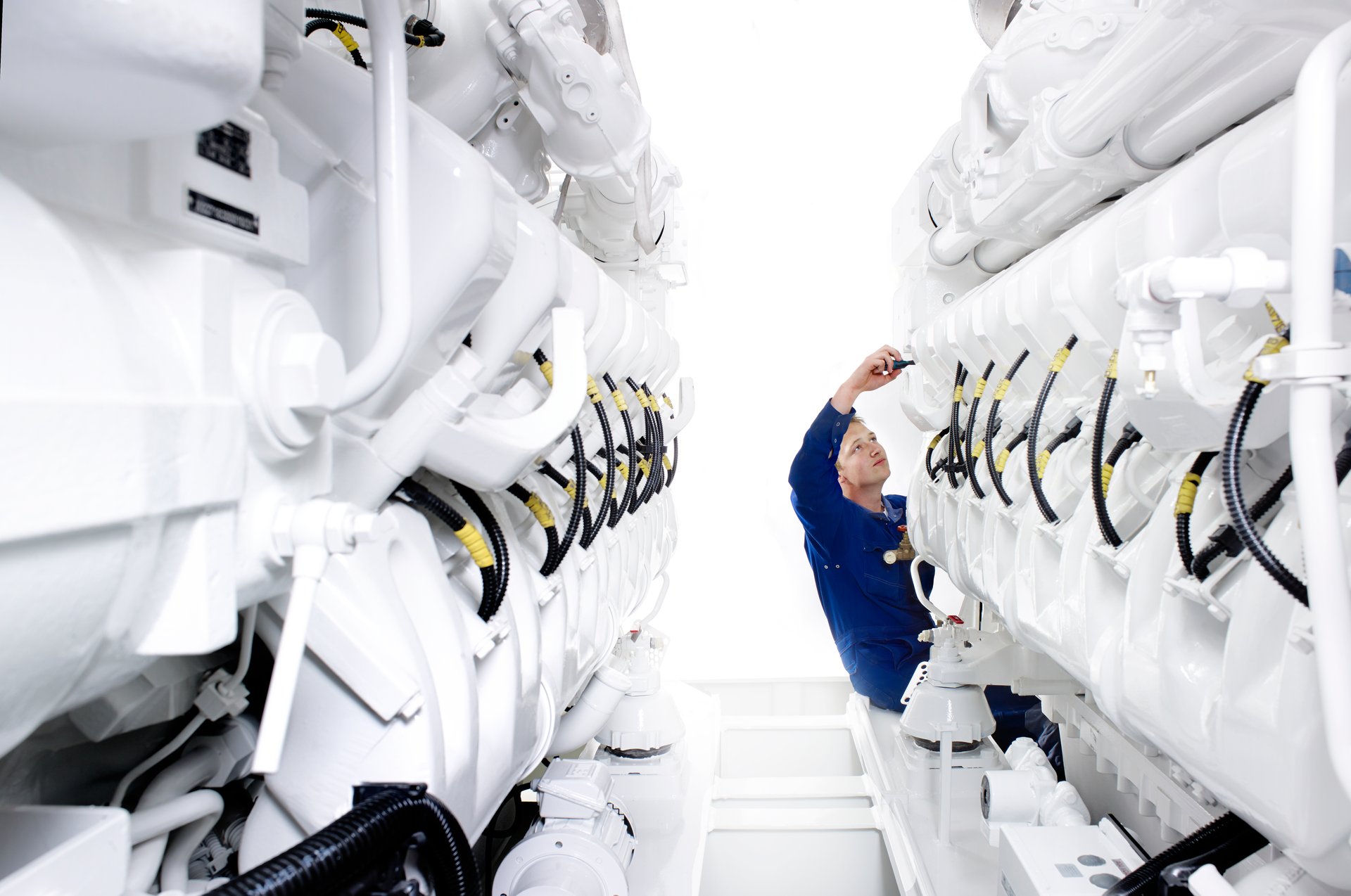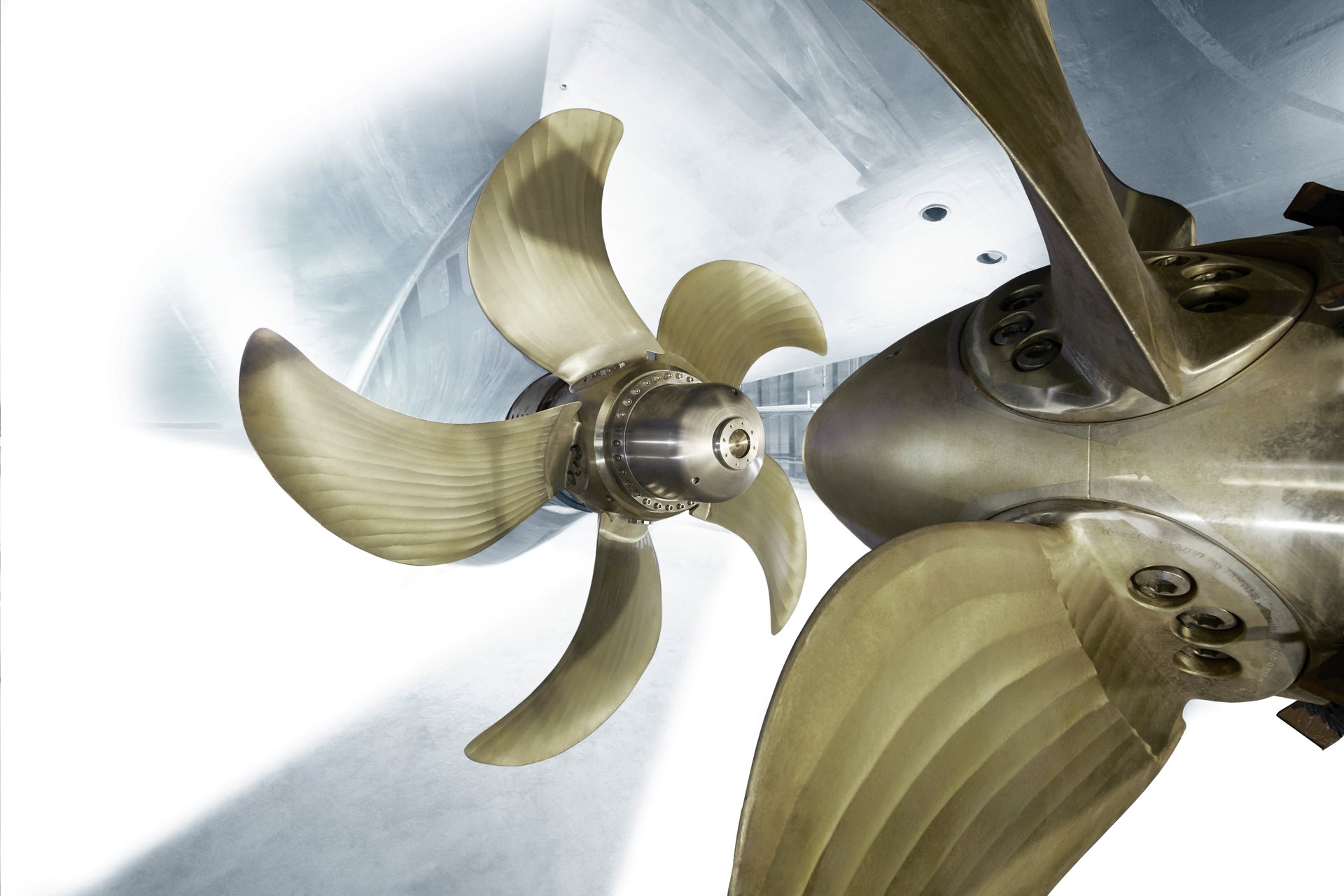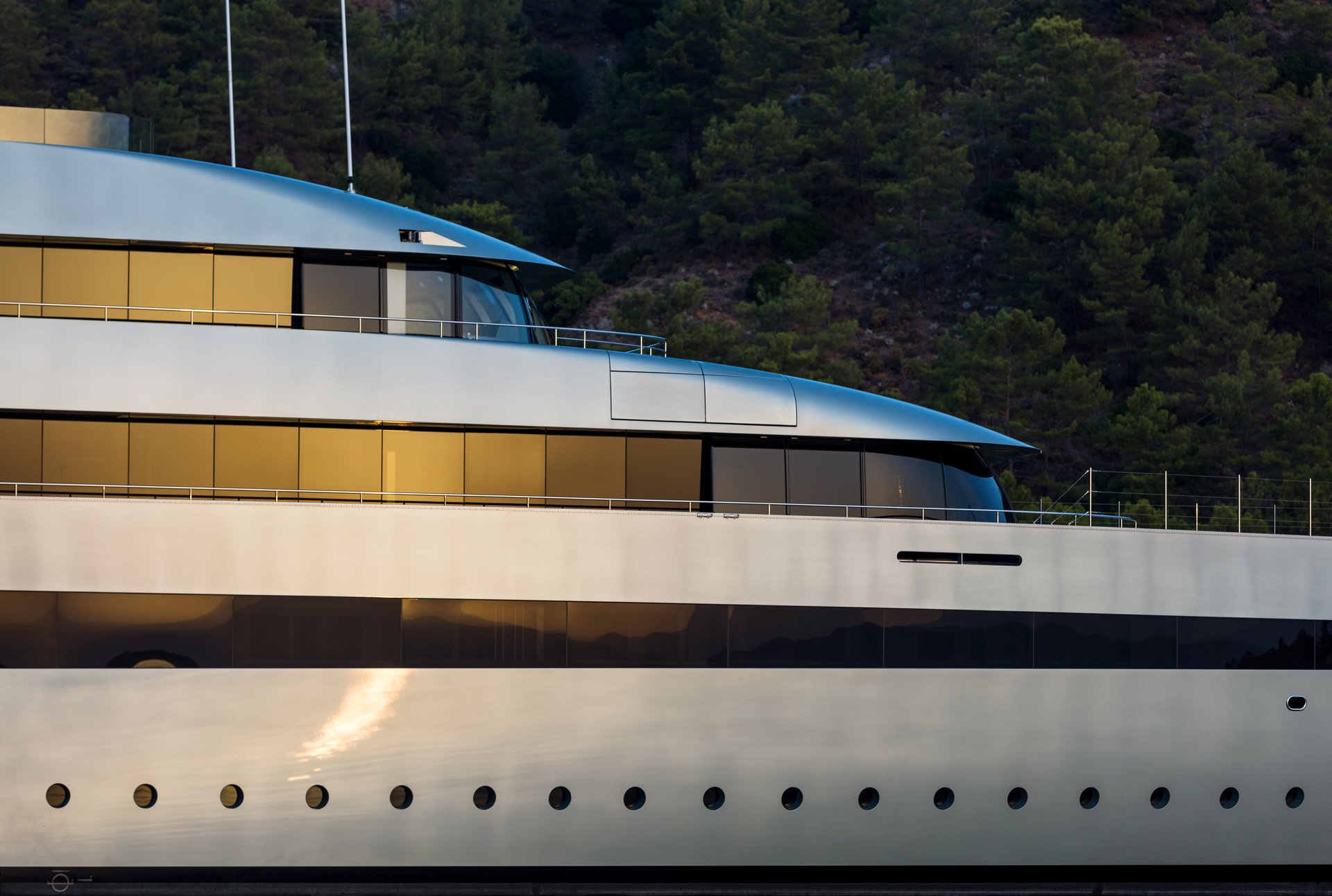Traditionally superyachts use old-grown teak for decking. This ‘superyacht quality’ teak originating from Myanmar is sanctioned by the European Commission due to the political situation. This, combined with global sustainability challenges and the new European Deforestation Regulation, promotes superyacht builders to consider new alternative decking materials. Clients of custom yachts can select any regulatory compliant and available decking material. Yacht builders want to verify that the considered material will maintain the level of quality expected and assess the method of application. Based on samples and brochures it can be very difficult to determine the differences between all the available materials. Royal Huisman and Feadship have both tested new materials and compared these with standard materials for performance in outdoor- and laboratory tests. The results of these tests are provided anonymously for supplier or brand and include changes in colour, humidity, temperature and dimensions. The goal is not to (pre-)select but to understand the differences between the available options and the impact this will have on the yacht in the designing, building, and operational phase.
1. AVAILABILITY AND SUSTAINABILITY
The European Timber Regulation (EUTR) demands that all wood imported into the EU has been harvested legally. All wood imported into Europe, including teak (Tectona Grandis), must comply with this regulation. From the year 2021 restrictive measures have been issued against specific companies in Myanmar, including the only company legally allowed to extract timber in Myanmar. The teak species Tectona Grandis itself is not illegal and can be imported when compliant with all regulations. End of this year the European Deforestation Regulation (EUDR) also prohibits the import of products, including wood, which have contributed to deforestation with proven record of this fact. This will further reduce the availability in Europe for natural grown tropical hardwood.
The term sustainability has multiple aspects. If a polymer material is selected instead of wood, it can be claimed that this polymer saves the forest from deforestation and is therefore a sustainable material. Most polymers used for decking materials are fossil-based materials of which some have substantial impact in the production process in terms of global warming potential and released chemicals to the environment. Wood is a natural material which stores CO2. According to the GreenHouseGas protocol the material has a negative impact on global warming (it reduces global warming). This ignores the fact that the wood as a tree was still absorbing CO2 but has now been cut into strips to be glued to a deck using a fossil-based polymer adhesive. For all materials, not only the legal source and availability must be considered but also the different impacts on sustainability.
2. RECOMMENDED TESTS
The deck area on a yacht is what brings the owner and guests to the exterior surrounding to be enjoyed. The difference between a commercial metal deck painted with anti-skid paint and a wood covered deck is clear. A metal deck can get very hot in the sun, transfer every sound to the decks below and can still be slippery when wet.
A decking material is placed on top of the structural deck material. This material needs to provide slip resistance in wet conditions, should still be walkable barefoot in sunny conditions and reduce the sound transmission towards decks below. The lifespan of the material needs to be in the order of multiple decades in relation to the amount of work which is related to a deck replacement. The decking material is subjected to outdoor conditions like seawater, high UV loads and moving deck furniture. Low moisture absorption, high UV- and scratch resistance are all relevant. Besides the technical aspects, the decking material need to have aesthetic appeal. It is relevant to test the properties of any material before considering application. The following list is a series of non-required but recommended tests which can be used to determine the suitability of a decking material:
Q-UV test, accelerated aging using UV and moisture (NEN EN927-6)
Measure colour change (ISO 11664-4)
Dimensional stability (EN318 and NEN-EN 1910)
Scratch resistance / hardness test (ISO1518-1)
Effusivity (ASTM D7984-16)
Skid resistance (EN 1339 and CAP437)
Resistance to cleavage (ASTM D143 with modifications)
Outdoor test (temperature, colour, general appearance, moisture)
Further clarification of these tests is provided below.
2.1 Q-UV
Test method NEN-EN 927-6 is a test for exterior wood (coatings) exposed to artificial weathering using fluorescent UV lamps and water. Samples 95x64 mm in size are placed in a test chamber equipped with UV lamps, a heated water tray and spray nozzles. In cycles the lamps expose the panels with an irradiance of 0.89 W/m2nm at 340 nm spectral wavelength for 2,5 hours at 60 deg Celsius after which the lamps are switched off. After this period the sample is subjected to water spray at 6-7 liter/min for 0,5 hours. This 3 hour cycle is repeated up to 12 weeks.


Figure 1 above provides an example a Q-UV test result. For decking materials the most relevant aspects to evaluate after the test period are colour change, cracking and general appearance. In terms of appearance the 6 weeks exposure shown above is comparable to the appearance which can be expected after 1 year external exposure. Page 3 of 11
2.2 Colour change
Colour changes due to UV exposure can be measured according to ISO 11664-4 using a colourimeter. There is a significant difference in colour between wet and dry condition. Wood, unlike paint, does not have an even colour distribution. To obtain accurate data for comparison measurements in dry condition at exactly the same location on the sample is required. Exterior light conditions should also be excluded from having an influence on the colour readings.
2.3 Dimensional stability
There are multiple ways to determine dimensional stability. For wood the dimensional stability is different in length, width and height direction. Two methods are used: EN318, which is suitable for wood based panels, and EN1910 specific for wood.
EN318
In test method EN318 strips are used which are saturated with moisture until constant mass in 30%, 65% and 85% relative humidity condition. Both weight and dimensional changes are measured. After these conditions the samples are oven dried to determine the moisture content inside the wood. Typical sample dimensions are 200-300 mm in the direction of most interest, which is usually the radial wood plain direction and in 150mm width. Thickness can be up to 25 mm but the samples take longer to saturate at higher thickness.
EN1910
Samples are conditioned in different successive climate conditions (30%, 50%, and 85 % relative humidity). The change in dimensions is determined. The samples are minimum 250 mm in length.
2.4 Scratch resistance
To determine hardness or scratch resistance equipment specified in ISO1518-1 can be used. There are also Hardness Pen’s with an adjustable load and tip which the same results.
2.5 Effusivity
𝑒 = √𝑘. 𝜌. 𝐶𝑃
Thermal effusivity (e) is related to how cool or warm a material feels. The value depends on the square root of the thermal conductivity (k), density (ρ) and thermal capacity (CP). If wood is heated to for instance 70 deg Celsius, it feels warm but not too hot to handle. A metal object at the same temperature feels much hotter. From a metal object heat is transferred from the object to a person or hand much faster due to the higher thermal conductivity (and density / thermal capacity).
The theoretical thermal effusivity can be calculated with the three material properties mentioned before. There are also thermal effusivity meters. These sensors are relevant because the behaviour of a material can be different on the surface. At the surface, properties like roughness, contact resistance, radiation and convection affect the heat signature. An effusivity meter can be set between the range of 2 to 10 seconds. The 2 second value is a reference to the initial feeling of the surface, the 10 second value will be closer to the bulk material property.
2.6 Skid resistance
Skid resistance tests are performed according to EN 1339-1. With this method, a pendulum is used in two directions on both a dry and a wet surface. The skid resistance is determined by the extent of overshoot of a rubber slider of the pendulum. Typically, this method is used for civil industries, e.g. for floorings and road surfaces. The aim of these tests is to make sure that the decking material is not slippery (especially on a sailing yacht where there is a heeling angle during sailing). However, it should also not be too rough, because then there is a risk of tripping.
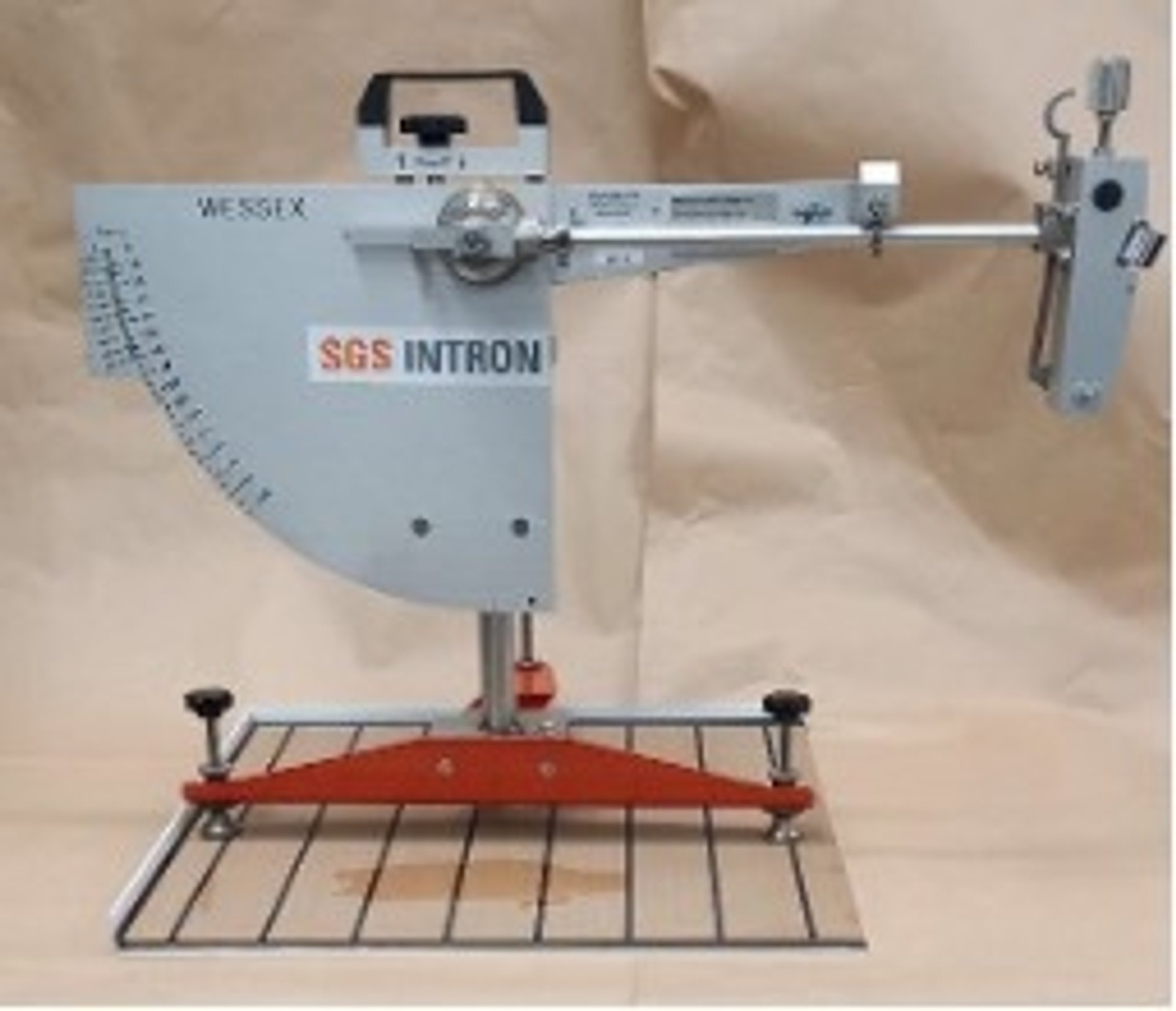

Figure 2 Pendulum method testing for skid resistance
3.7 Resistance to cleavage
Some wood species and wood like products tend to splinter. This is not acceptable in superyacht decking. The tendency to splinter cannot be tested directly. As an alternative the resistance against cleavage is tested. The cleavage strength is tested according to ASTM D143 with modifications, which is a destructive test. The original test requires test pieces with a thickness of 50 mm (and width of 50 mm). For decking this is not a logical thickness to use. Therefore, test pieces with a thickness as is used in the application (+- 20 mm) is used.
3.8 Outdoor test
Laboratory sample tests can provide a fast initial indication. The results of a laboratory test can be different from a sample placed outdoor which is subjected to all weather conditions and regular cleaning activities. A static test panel on dry land still differs from a moving yacht with maintenance crew but it is the closest feasible alternative. An example of a static test panel site is provided below in figure 3.
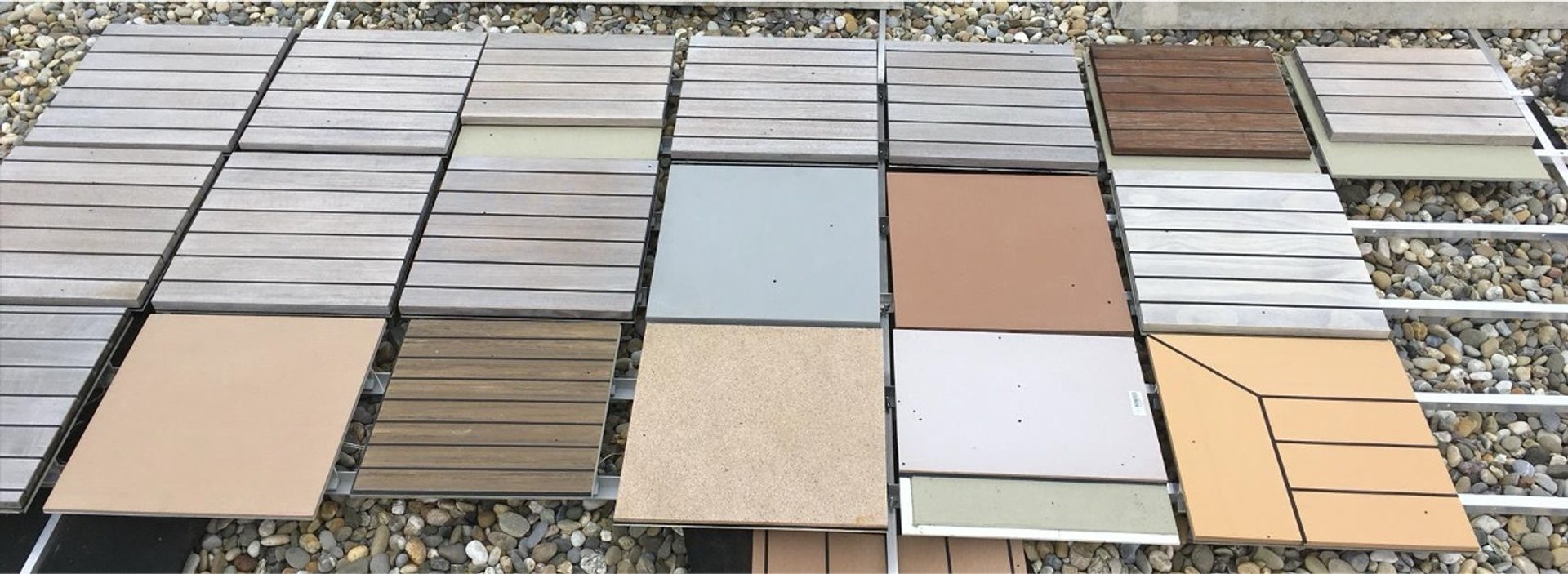

Figure 3 Static test panel site at Feadship main office
3. WOOD OPTIONS
3.1 Hardwood
Hardwood is defined by originating from leaved (shed their leaves annually) trees. Softwood comes from needle-leaved (not shedding annually) trees. Because of this difference hardwood is often denser than softwood but there are exceptions like balsa wood (very low density but defined as a hardwood). Since high density wood has a higher durability than low density wood, a low effusivity (feels nice barefoot) and natural skid resistance, hardwood is a common decking material.
3.1 (a) Teak
Teak (Tectona Grandis) is a tropical hardwood of which the highest quality grows primarily in the forests of Myanmar and smaller quantities in Thailand and India. The natural oils, hardness and durability have been used for furniture, wood carving and ship building for hundreds of years.
Natural forests containing teak are declining due to both legal and illegal deforestation. The number of, sometimes FSC certified, plantations is increasing. In plantations the trees are managed to grow straight up in order for them to be harvestable after 20-40 years. Some plantations are located in Sout East Asia but others are located in for instance Costa Rica and Brazil.
3.1 (b) Iroko
Iroko, Chlorophora Excelsa, is native to the west coast of Africa. It is sometimes called African- or Nigerian teak but the wood has no relation to the teak species. Iroko is on the IUNC red list as a vulnerable species. It is listed as vulnerable due to a population reduction of over 20% in the past three generations, caused by a decline in its natural range, and exploitation. Iroko can be sourced with independent FSC® certification.
3.1 (c) Freijo
Freijo, Cordia Alliodora, grows from southern Mexico to Brazil. Freijo is known by an abundance of common names, (such as Laurel Blanco), and is a relative of the more commonly-known Bocote and Ziricote. Its appearance has been compared to teak or mahogany, though it bears no direct botanical relation to either. Freijo can be purchased FSC® certified.
3.1 (d) Maple
Hard maple, sugar maple, rock maple. Scientific Name: Acer Saccharum. The wood is for instance used for bowling alleys and basketball courts. Maple can be harvested from North American renewable forests. The area where this wood is harvested is growing substantially in size, not declining. When processed normally (drying) maple wood is not suitable for outdoor use due to warping, splitting and natural resistance to decay. If a thermal modification process using steam is utilized the durability can be increased to the highest durability class.
3.1 (e) Laminated hardwood
Both natural grown and plantation wood can be sawn in strips 0.5-1.5 mm in width which are bonded together to wider widths. This is for instance available from several suppliers in the form of laminated teak. The laminate replicates natural grown 100-year-old wood grains. Instead of just 10% this increases the percentage that can be used for yacht decking to 60%. Controlling the moisture content of the wood used for the laminated wood is very relevant to prevent cracks between the glue joints.
3.2 Softwood
Softwood comes from needle-leaved (not shedding annually) trees.
3.2 (a) Oregon Pine / Douglas
Oregon Pine or Douglas-Fir is not a true Fir (Abies genus), but is in its own genus: Pseudotsuga Menziesii. The tree itself grows to be very large and yields a large amount of usable lumber and veneer for plywood. It is an incredibly valuable commercial timber, widely used in construction and building purposes. The wood is very stiff and strong for its weight and is also among the hardest and heaviest softwoods commercially available in North America.
This wood species is not listed in the CITES Appendices and is reported by the IUCN as being a species of least concern.
3.2 (b) Cypress
Cypress indicates evergreen conifer species from the Cupressaceae family found in Asia, Europe and North America. The wood has high rot resistance and durability. It is not as commonly used as Oregon pine.
3.2 (c) Modified softwood
Softwood generally has a lower density and durability than hardwood. Since softwood is more available at lower cost several companies have developed processes to enhance the durability of softwood. Natural- or chemical resins and thermal modification processes are used for this purpose. In general the process used is a trade secret and the product supplied under a trademark name.
4. POLYMER OPTIONS
4.1 Polyurethane
Polyurethane (PU) deck materials are mostly applied by liquid application on the deck and come in a few variations but the main difference is between the aromatic- and aliphatic PU. Aromatic means closed chain structure hydrocarbons, aliphatic compounds also have open chains. NB a compound may be called aliphatic if more than 50% of the compound has this property. Aromatic PU is more durable against wear than Aliphatic PU. Aromatic PU is however sensitive to UV discolouration and degradation while Aliphatic PU is stable against UV degradation.
The latest versions of Polyurethane decking material have been modified to closer resemble wood in terms of the thermal properties (effusivity).
4.2 Polyvinylchloride
Polyvinylchloride, PVC, is a common thermoplastic polymer. Thermoplastics polymers can be 100% recyclable and can be repeatedly transformed into new products. However, PVC is bonded to a deck using thermoset adhesives from which the PVC cannot be separated. Since the thermoplastic cannot be separated from the adhesive residue, it is treated as residual waste. PVC production and disposal results in the release of toxic chlorine-based chemicals and is the most environmental damaging plastic of all.
5. OTHER OPTIONS
5.1 Cork
The cork oak is the only plant species capable of producing cork in a sustainable manner. Cork is not wood but dead inert tissue. It is a tree with voluminous bark with suberose tissue (the cork); it has green foliage all year round and can reach up to 10 to 15 m in height when adult. It has good longevity and an enormous capacity for regeneration. It is a typical species of the western Mediterranean region and can live, on average, 200 years, despite the stripping that is done during the course of its life: more than fifteen in all, with at least nine years between each stripping. The cork can be removed without damaging the tree, enabling it to be regenerated.
5.2 Polymer organic/ceramic hybrids
Several suppliers have combined the advantages of a polymer with an organic filler.
Wood dust can be mixed with a resin to create a product which has a more natural behaviour than a pure polymer. Other natural materials like rice husks have also been applied.
Large ceramic pieces offer little slip resistance, become very hot in the sun and are likely to crack if they are connected to a moving structure. When small ceramic pieces are mixed with a flexible polymer most of those disadvantages disappear. The name for such a product is often referred to as “stone carpet”. The stone particle can be anything from marble to even glass. For outdoor applications these stone carpets are covered by a transparent sealer.
6. TEST RESULTS
6.1 Q-UV
The accelerated weathering test Q-UV give a good indication in about 6 weeks what the expected behaviour would be in about a year outdoor. An advantage of this test is that cleaning has no effect on the surface texture or results.
At Feadship, all samples which showed cracks in the Q-UV test have also shown cracks in the outdoor test after long exposure. An example is provided in figure 4. Wood species lacking natural oils have a larger risk of forming cracks due to moisture content variation. The colour change in the Q-UV test is discussed in the colour change paragraph.
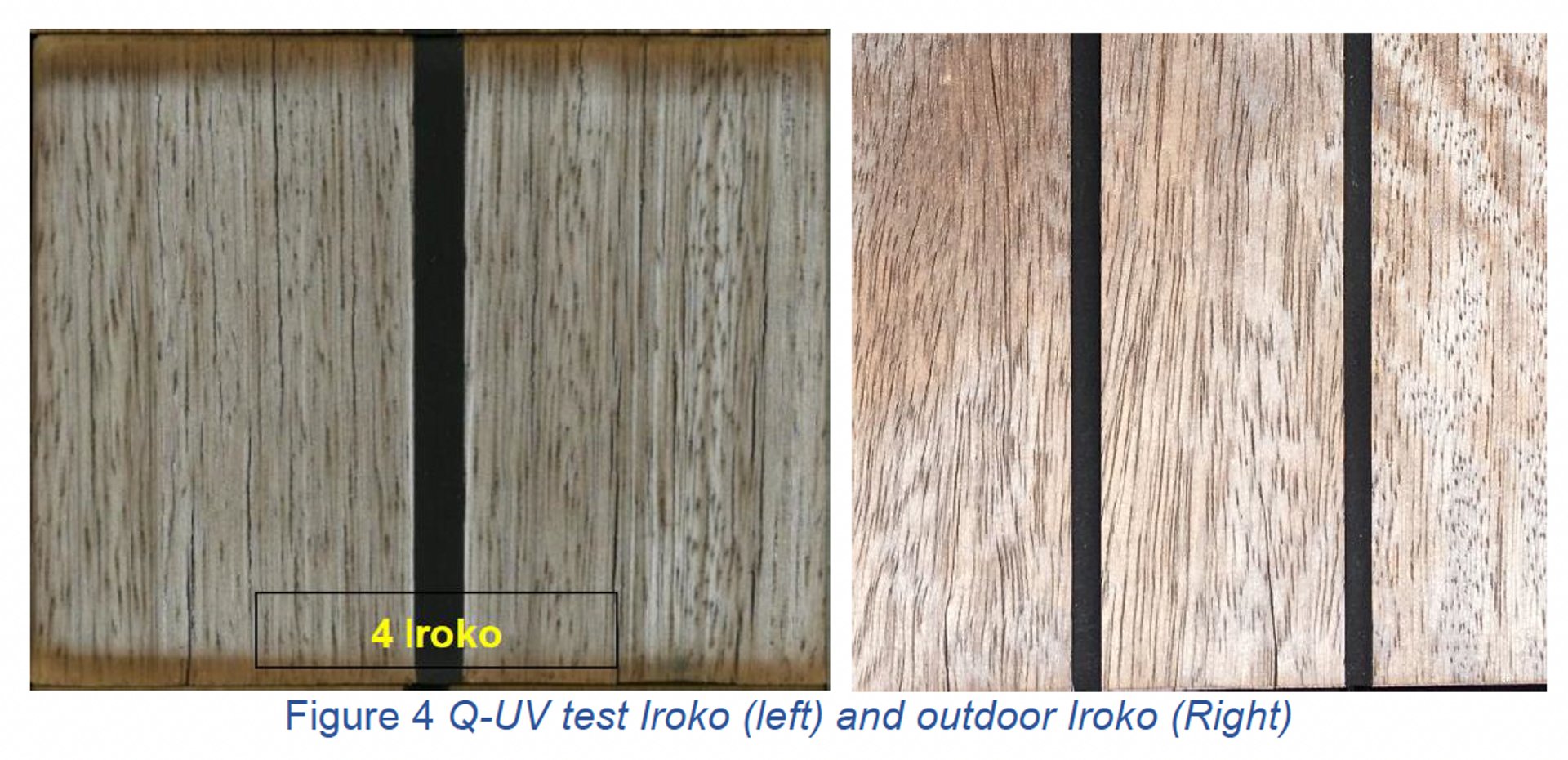

6.2 Colour change
When the measured colour change of a Q-UV test is compared to 2 years of outdoor testing the results are similar as shown in figure 5. ΔEab is the difference between two colours (square root difference of the separate L*a*b colour values). For wood the outdoor samples show more discolouration than the Q-UV test and for polymers most outdoor samples show less discolouration than the Q-UV test (PU3 is exception).
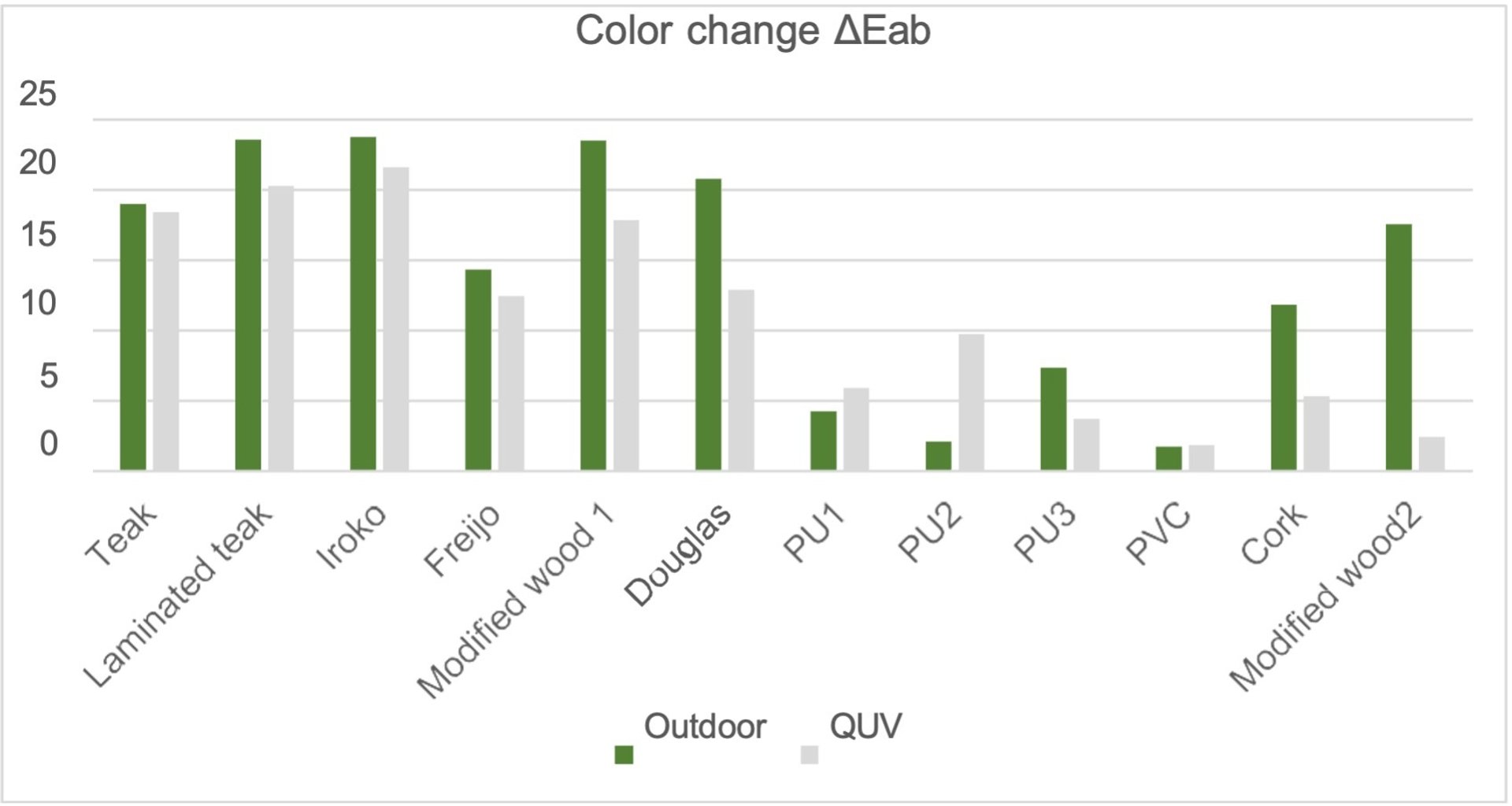

Figure 5 Q-UV test and outdoor colour change for a number of materials
Colour change for wood is a very normal and natural process. Most polymers show much less colour change but can also shift to unnatural colours e.g. from a light brown teak resembling colour towards orange.
Conventional teak decks will become grey in a few weeks in the sun. Depended on the preferences of the owner, the deck is either grey or measures are taken to get the original colour back. These measures include sanding, scrubbing and cleaning with water and/or chemicals. Very frequent cleaning and sanding does decrease the lifespan of a deck since it will become thinner. Royal Huisman sanded one half of each sample to show the difference. It was noted that the grey samples looked more similar to grey conventional teak than the original colour. Also, the laminated wood became more visually similar to conventional teak.
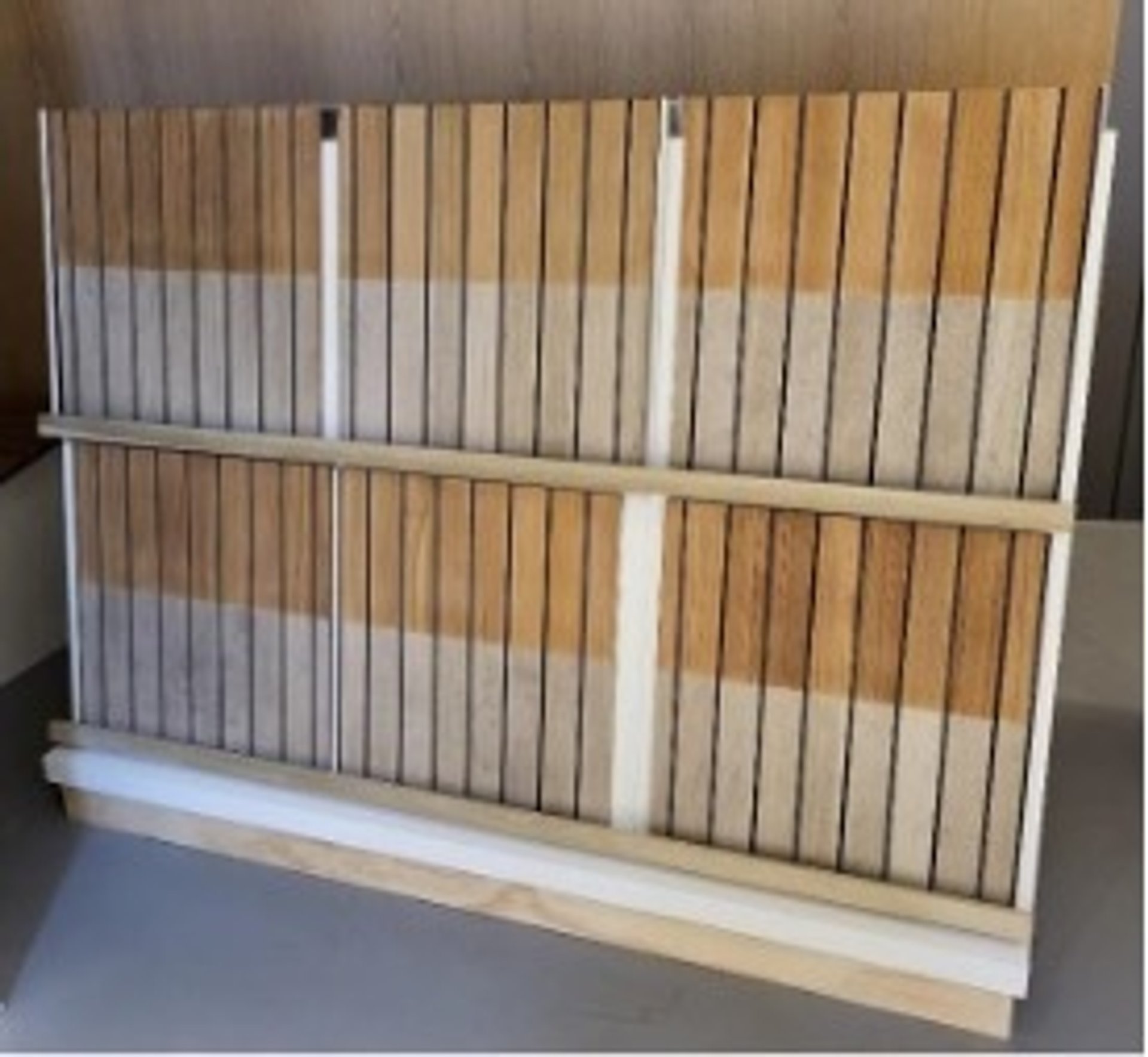

Figure 6 Half sanded display panels at Royal Huisman, including old-grown teak, production teak, laminated teak, Iroko, and modified hardwood
6.3 Dimensional stability
This property is only relevant for moisture absorbing natural materials like wood. For property comparison of wood the shrinkage numbers are relevant (Radial, Tangential, Volumetric). For quarter sawn wood the radial direction is between the caulking lines and is the most relevant direction. For hardwood like teak this value is in the 2-3% range. For softwood the value is higher in the 4-6% range. The longitudinal direction (in length direction of the tree) is very low, below 0.2%, and does not provide relevant information.
The test method EN318 is used for materials with unknown dimensional stability. An example is laminated wood. The laminated properties are different from solid wood of the same wood species. The stability also depends on the width of the strips. Outdoor samples of laminated wood have shown to be sensitive to cracking/splitting and varies with the moisture content of the strips of wood before laminating. Non-quarter sawn wood is also more sensitive to cracking.
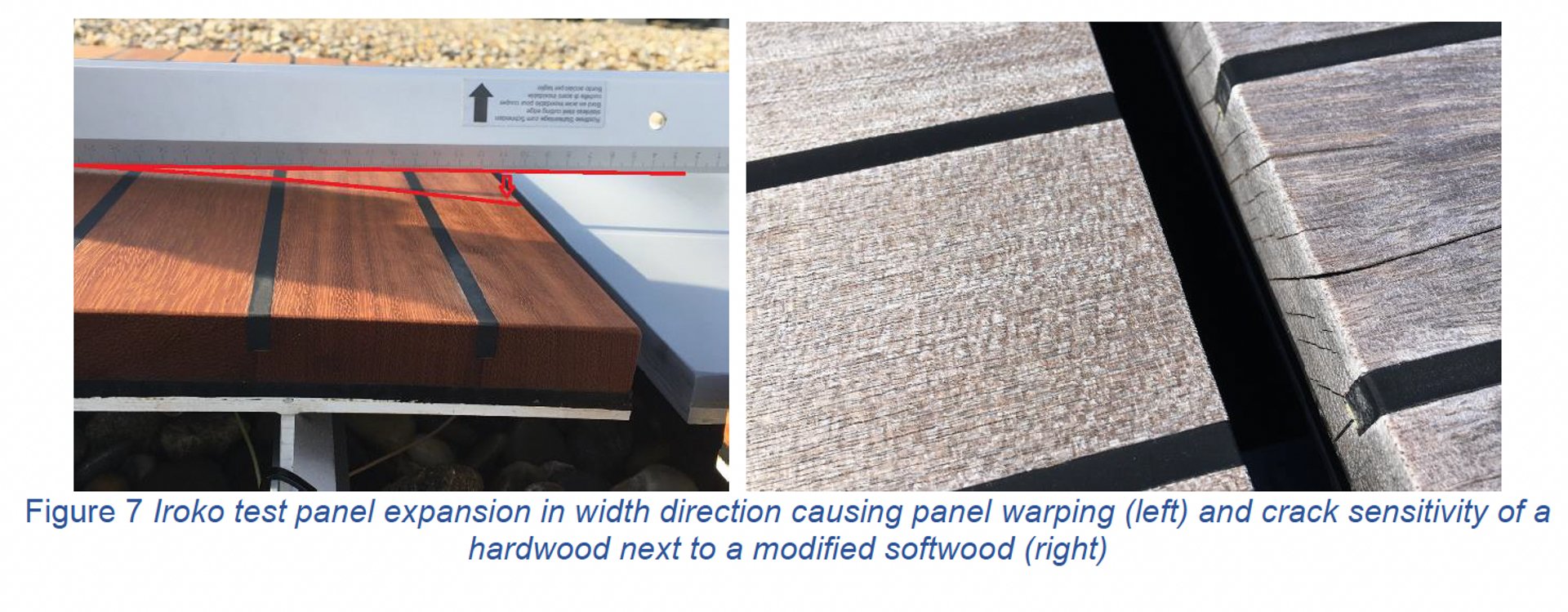

6.4 Scratch resistance
Scratch resistance can be tested for comparison. Softwood generally shows deeper scratches than hardwood. All tested polymer decking show very high scratch resistance. Cork is very soft and the test pen used carves this material relatively deep. For comparison some pictures of tested samples are provided in figure 8.


6.5 Effusivity
A comfortable effusivity, either calculated or measured, for a decking material is below 500 W√s/m2K. Higher values can feel hot in sunny conditions. In general most natural or wood materials are below this value. Artificial polymers in general have a higher density and need modification with fillers to lower the effusivity. The effusivity range of tested materials is between 450-600 W√s/m2K.
6.6 Outdoor test
Laboratory tests are relevant for fast indication and are relevant for reference under the same test standard condition. Outdoor tests however are subjected to varying weather conditions and cleaning routines. Outdoor panels which performed well in the first 12 month exposure can show different behavior after 24 months or even 36 months.
On outdoor test panels differences in effusivity did not result in noticeable differences in how warm a panel feels. The biggest difference in how warm the panel feels was related to the colour of the panel. Both integrated thermocouples just below the top surface and infrared images of the top surface confirm this statement. The largest difference in temperature measured between the selected deck materials is about 10 degrees Celsius between the lightest colour and the darkest colour test panel. The colour grey becomes warmer than expected based on the lightness measurement value, so the colour of the material can also be relevant. The darkest (lowest L* LAB colour value) is bottom left with an L* value of 45 which gets the hottest of alle panels.
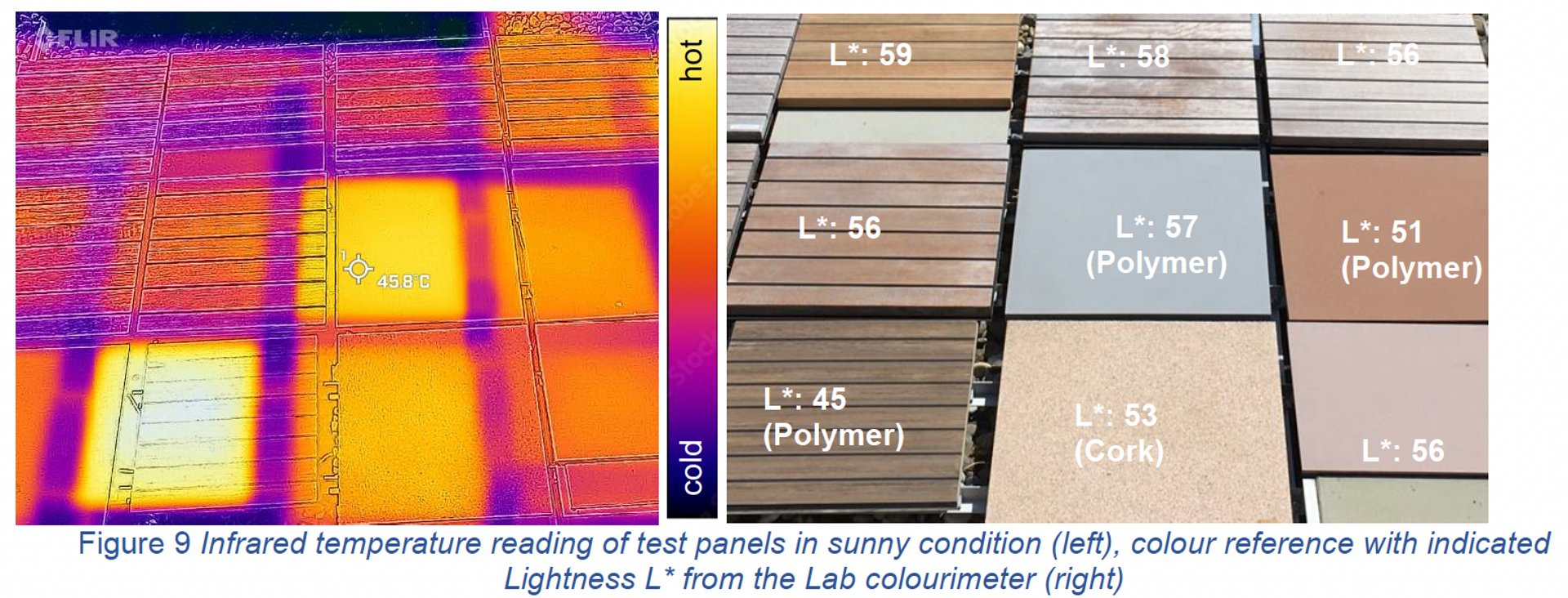

7. CONCLUSIONS
This paper has provided an overview of some of the available decking materials and methods which can be used for evaluation. These methods do not replace craftmanship and experience, but they do provide information regarding how a material performs. Besides basic safety requirements there is no fixed build specification according to which decking materials must be evaluated. The perfect decking material is custom for the yacht considered and is area specific. Wood is too sensitive for damage and staining in a tender garage but could create a more natural appearance on an owners deck. In some designs a classic appearance works best while others combine much better with a modern deck design.
Research by both Royal Huisman and Feadship has shown that laboratory tests give a good initial indication of material performance. Materials which show issues in those tests show the same problems in outdoor tests or deck applications. Passing the laboratory tests is no guarantee for quality. Multiple materials revealed issues after longer periods outdoor like cracking, discolorations, expansions issues. Outdoor sample tests are very useful to find any issues which were not revealed by laboratory testing. Another very helpful option is to see realized applications which have been in operation for some time. Seeing such a deck in person is far more effective than looking at pictures.
Some general observations from the different tested materials:
Aged (grey) wood often looks more similar to grey teak than new decks
Polymer decks get and feel warmer in the sun than wooden decks
The colour of the material is a main factor for the deck temperature
Polymers are more resistant to scratches and staining than wood but have a high thermal expansion (wood has mainly moisture expansion in width direction)
Non-quarter sawn wood is more sensitive to cracking after long term outdoor exposure
The recent developments have changed the deck material to a fully customizable feature which fits the design, durability and sustainability request of the customer. The deck material options are increasing in number and are becoming ever more sustainable. We challenge both suppliers and other yacht builders to enter into this new deck material era and share their applications for the world to see.
